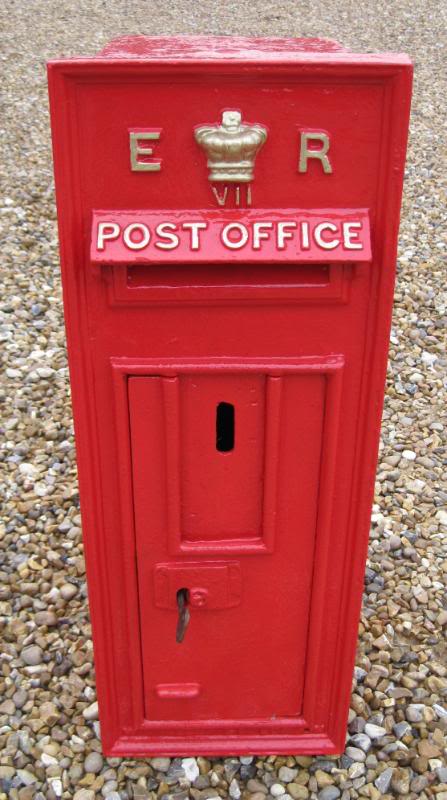By the mid-1800s adhesive postage stamps were widely used, and the Post Office Department recognized that people no longer needed to go to the post office to deposit their letters. Instead, they could keep stamps at home and mail letters at their leisure. So the department began to build and distribute mailboxes throughout U.S. cities.
Did you scroll all this way to get facts about cast iron letter box? Well you're in luck, because here they come. There are 52 cast iron letter box for sale on Etsy, and they cost $110.74 on average. The most common cast iron letter box material is wood. The most popular color? You guessed it: black. Shop Ironmongery World Black Antique Cast Iron Tudor Letter Box Plate 11' x 4',Free delivery and returns on all eligible orders, FREE & FAST Shipping Best Shopping Deals Online Lower Prices for Everyone Provide the best products for every a customers. 4.9 inch House Number for Outdoor or Indoor, Premium Rustic Cast Iron Numbers and Letters for DIY Projects or Door, Street, Planter Boxes, Creative Clock Art Decorating, Letter. Sprinkle salt and pepper evenly over steaks. Heat a large cast-iron skillet over high heat. Action act nevada mex-9081 driver download for windows. Add oil to pan; swirl to coat. Add steaks to pan; cook 3 minutes on each side or until browned. Reduce heat to medium-low; add butter, thyme, and garlic to pan. Carefully grasp pan handle using an oven mitt or folded dish towel.
Credit for patenting the first letter box officially sanctioned by the Post Office Department goes to a Philadelphia iron products manufacturer, named Albert Potts. His idea, which was patented on March 9, 1858, was to incorporate the letter box into either existing street side lamppost, or new lampposts to be provided by his firm. Pott's receptacles were small. As a result, they probably required frequent emptying. To eliminate the constant need for collections, a larger box was obviously required.
Cast Iron Letters

Vintage Cast Iron Letters
In 1860 a contract was awarded to John Murray for the production of 1,600 larger lamppost letter boxes. Like the Potts' boxes, these were literally incorporated into the lamp posts. No original examples of the Murray mailbox are known to have survived.
The Orr & Painter iron manufacturers of Reading, Pennsylvania began manufacturing another style of mailbox in the early 1880s. Their cast iron boxes were designed to be hung anywhere, from telegraph poles to the sides of buildings.
During the same year as the Johnstown Flood, the Post Office Department ordered the production of a new style mailbox. Designed by Willard D. Doremus, three sizes of this style of box were produced. These boxes were not very strong and were easily shattered by thieves who made off with the mail. The lip over the letter slot often broke, letting in rain and snow.
Letter Box.org
By 1891 the U.S. Post Office Department had over 48,400 letter boxes of various types in use around the country. When postal officials accepted this style box, developed by Eugene D. Scheble, a dentist from Toledo, Ohio, the postal system encountered a great deal of trouble. Illegal deals were involved in the selection of the mailbox. Ultimately several prominent persons were indicted by a grand jury in 1903 on charges of conspiracy and fraud in connection with the letter box contracts, but not before more than 49,300 Scheble style boxes had been purchased. The Scheble mailbox was made of sheet metal, not iron.

Antique Cast Iron Letter Box

The Van Dorn Iron Works of Cleveland, Ohio, was selected to make better boxes. Although Van Dorn boxes were known for their durability to weather, they were rather homely in appearance. Despite the fact that some models were 'spruced up' by the addition of fancier handles, they were generally so unattractive that in some cities local postmasters were requested, if not absolutely required, to remove them from boulevards, avenues, and streets where the letter boxes were out of harmony with the ornate electric lampposts then in use.
Letterbox
The color of some Van Dorn letter boxes was another major problem. For a brief period, some boxes were painted bright red. These were frequently confused for similarly painted fire alarms and police call boxes. To overcome this, postal officials directed that boxes should generally be painted dark green.
